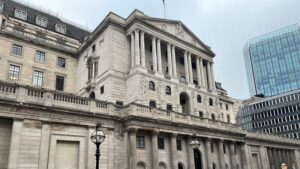The headlines include:
‘Markets slide further on euro woe’
‘Oil prices fall on economy fears’
‘Banking reform would cut growth’
‘UK manufacturing output shrinks’
‘US manufacturing output slows’
On the other hand the list of positives includes ‘Europe set to avoid recession’ and ‘White House upbeat on US economy’.
This last one can be discounted as it would be hard for the White House to be anything other than upbeat on its own economy, especially as the article the headline introduces goes qualifies this with: “The US economy will avoid falling back into recession [and instead grow 1.7%]”.
Reaction from investors has followed a similar downbeat path with the Investment Management Association’s latest figures, for July, showing net retail sales falling to levels last seen three years ago. Things did not improve after this period as August’s market graphs show huge peaks and troughs on consecutive days, with the New York Stock Exchange showing such volatility on four straight days early in the month.
The IMA figures also show large outflows from equities in the month of July while in Europe as a whole this had changed into a “modest rebound” in equities during August, according to EPFR Global, “on the back of bargain hunting and optimism that the US Federal Reserve will pull the trigger on another round of quantitative easing.”
The mood of investors was further captured by EPFR Global whose analysis went on to show most of the new money went into ‘safe haven’ or defensive assets.
“Investors showed a strong preference for the flexibility offered by ETFs as actively managed equity funds posted collective outflows for the eighth consecutive week,” its report added.
The market and economic volatility tell us little about how long, say, the eurozone sovereign debt crisis will last, or when various developed economic growth stories will push through to even 2% for consecutive quarters. Market timing is nigh on impossible to consistently get right and, as followers of John Maynard Keynes will recognise, trying to explain economic patterns in terms of individuals making rational decisions does not work.
So safe haven assets will continue to be the place for investors to seek out, with fundamental analysts continuing to debate what exactly constitutes a safe haven.







